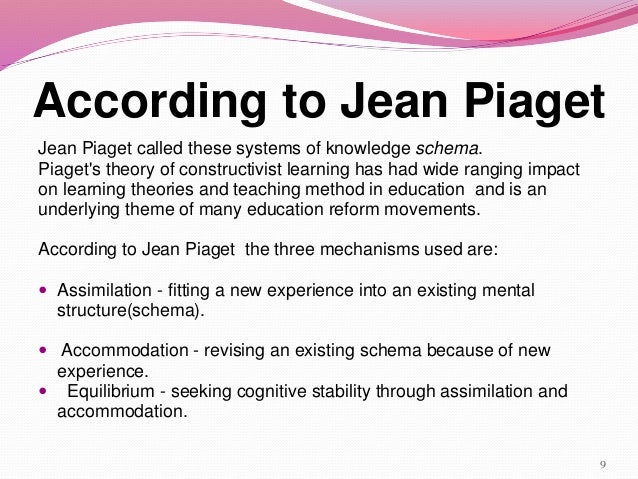Constructivism is a theory of learning that suggests that individuals actively construct their own understanding of the world through their experiences and interactions with it. This theory, developed by psychologist Jean Piaget and educational theorist Lev Vygotsky, has had a significant influence on the field of education and the way that teachers approach the process of teaching and learning.
Piaget's theory of constructivism emphasizes the role of cognitive development in the learning process. According to Piaget, children actively construct their understanding of the world through a process of assimilation and accommodation. Assimilation refers to the process by which individuals incorporate new experiences and information into their existing cognitive schemas, or mental frameworks for understanding the world. Accommodation, on the other hand, refers to the process of modifying or adapting existing cognitive schemas in response to new experiences or information.
Piaget argued that children progress through a series of distinct stages of cognitive development, each characterized by a specific level of understanding and ability to think abstractly. For example, during the sensorimotor stage, which lasts from birth to about 2 years of age, children develop a basic understanding of the world through their senses and physical interactions with objects. As they progress through the preoperational, concrete operational, and formal operational stages, they develop increasingly sophisticated cognitive abilities, including the ability to think logically and abstractly.
Vygotsky's theory of constructivism, on the other hand, emphasizes the role of social interactions and cultural influences in the learning process. According to Vygotsky, learning occurs through interactions with more knowledgeable others, such as parents, teachers, and peers. He introduced the concept of the "zone of proximal development," which refers to the difference between what a learner can do independently and what they can do with the help of a more knowledgeable other.
Vygotsky argued that learning occurs through a process of internalization, in which individuals internalize the knowledge and skills they have learned through interactions with others and apply them to new situations. He also emphasized the role of language and culture in shaping cognitive development and learning, arguing that language is a key mediator of thought and that cultural values and practices play a significant role in shaping the way that individuals construct their understanding of the world.
Both Piaget's and Vygotsky's theories of constructivism have had a significant impact on the field of education, shaping the way that teachers approach the process of teaching and learning. The idea that individuals actively construct their own understanding of the world through their experiences and interactions with it has influenced the development of constructivist teaching methods, which focus on providing learners with opportunities to engage in hands-on, experiential learning and to construct their own meaning from their experiences. These methods have been shown to be effective in helping learners to develop deeper understanding and to retain knowledge over the long term.









